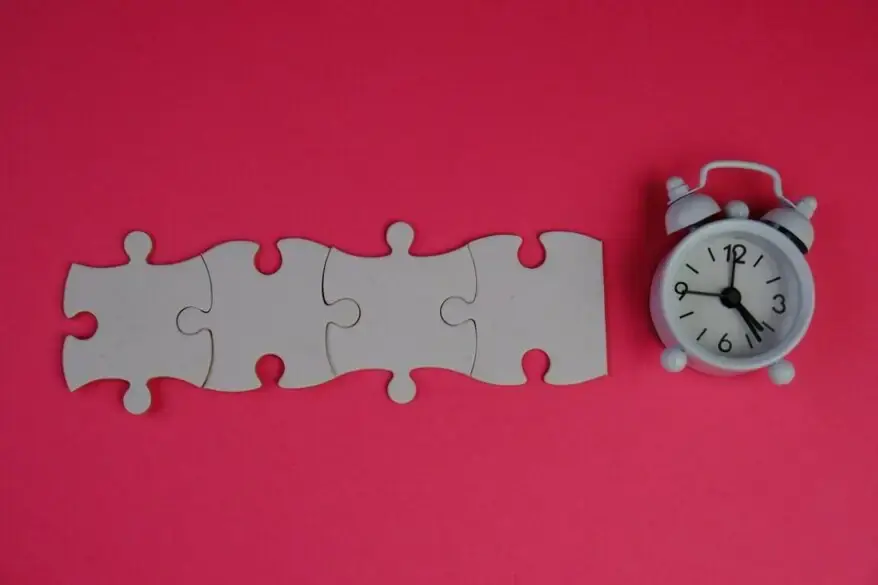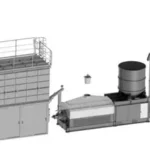THE PUZZLE TIME CHALLENGE: LET’S SOLVE IT!
Mathematical puzzles challenge our problem-solving skills and logical thinking, offering an engaging way to test our numerical abilities. In this edition of THE PUZZLE TIME CHALLENGE, we present a fresh set of intriguing puzzles that require a keen analytical approach. From calculating averages and solving number sequences to unraveling complex geometric problems, these puzzles will put your mathematical intuition to the test. Are you ready to dive into challenge and sharpen your reasoning skills?
1. The average marks obtained by 125 students in an exam is 29. If the average marks of passed students is 36 and that of failed students is 11. Find the number of failed students.
2. Ramsin camera was loaded with a new roll of film. The film can take 36 snaps. During class picnic, he took 20 pictures. What fraction of the roll can still be used to take snaps?
3. At intervals of 2, 4, 6, 8, 10, and 12 seconds, six bells start tolling simultaneously. How many times do they ring in unison in a 30-minute period?
4. What is the greatest number which divides 639, 1065 and 1491 exactly?
5. How many whole numbers from 1 to 999 contain the digit “1”?
6. The digit 3 occurs exactly 160 times in the page numbers of a book. What is the last page number that contains the digit 3?
7. If we write whole numbers starting from 1 to form a 500-digit number N as follows: N = 12345678910111213 …, what is the last digit of N?
8. If the day before yesterday was Sunday, what day will it be after 999 days?
9. Running at the same rate, 4 identical printers can print 100 papers in a minute. At this rate, how many printers could print 450 papers in 3 minutes?
10. The average of 5 numbers is 111. After another number is added, the average of the 6 numbers became 121. What is the 6th number?
Answers will be published in the February 2024 (next) issue.
THE PUZZLE TIME CHALLENGE – ANSWERS TO PUZZLE OF ISSUE 3, DECEMBER 2023

1. Jack correctly remembers that his mother’s birthday falls before the 23rd of April but after the 19th of April. On the other hand, his sister clearly recalls that their mother’s birthday is not on or after the 22nd of April. On which day in April is their mother’s birthday?
According to this statement, their mother’s birthday cannot be on the 22nd of April or any day after it. Combining both statements, we can conclude that their mother’s birthday must be on either the 19th, 20th, or 21st of April. Therefore, their mother’s birthday should be on ‘ – 20th or 21st of April.
2.In the following question, all the equations except one have been solved according to a certain rule. You are required to solve the unsolved equation following the same rule and to choose the correct answer out of the given options:
4 × 6 × 2 = 351, 3 × 9 × 8 = 287, 9 × 5 × 6 =?
As (4 – 1) (6 – 1) (2 – 1) = 351
(3 – 1) (9 – 1) (8 – 1) = 287
Similarly, (9 – 1) (5 – 1) (6 – 1) = 845
3.In open ground, Ron walks 20 m towards North, turns left and goes 40 m. He turns to his left again to walk 50 m. How far is he from the starting point? Distance between his starting and final point = √(302 + 402) = 50 m
4.When 6 boys were admitted & 6 girls left the percentage of boys increased from 60% to 75%. Find the original no. of boy and girl in the class. Let the number of boy and girl be x and y respectively.
Percentage of boys = 60%.
x / (x + y) = 60/100
100x = 60x + 60y
40x – 60y = 0…… (i)
6 boys were admitted
number of boys = (x + 6) Percentage of boys = 75%
(x + 6) / [(x + 6) + (y – 6)] = 75/100
x – 3y = –24…….. (ii)
Solving equations (i) and (ii), we get, x = 24, y = 16.
Therefore, original number of boy and girl are 24 and 16.
5.The population of the village is 5000. If in a year, the number of males were to increase by 5% and that of a female by 3% annually, the population would grow to 5202 at the end of the year. Find the number of males and females in the village.
Let initially the number of males and females in the population be x and y.
x + y = 5000 ……(i)
The number of males after a year will be = x + 5x/100
= 105x/100
The number of females after a year will be = y + 3y/100 = 103y/100
So, 105x/100 + 103y/100 = 5202 ….(ii)
On solving equation (i) and (ii), we get: x = 2600 and y = 2400
6.A lotus is initially positioned 2 meters above the water surface in a pond. However, due to the force of the wind, the lotus gradually tilts to the side, causing its stem to fully submerge in the water at a distance of 10 meters from its original position. Given this scenario, the objective is to determine the total depth of the water in the pond.
Let the depth of the pond BC be x m. CA = CD = (x + 2) m
So, the depth of the pond is 24 m.
7.A teacher attempting to arrange the students for a mass drill in the form of a solid square found that 24 students were left over. When he increased the size of the square by one student, he found he was short of 25 students. Find the number of students. Let the number of students be x.
No. of students = x² + 24 (as there were 24 extra students)
No. of students after increasing 1 student in square = (x +1)² – 25 (as there were 25 less students)
Now, x² + 24 = (x+ 1)² – 25 x = 24
So, no. of students = x² + 24 = 600
8.If the minute hand of a big clock is 1.05 m long, find the rate at which its tip moves in cm per minute.
Length of minute hand r = 1.05 m =105 cm
To find the rate at which it is moving we have to find distance (arc length) covered by it in 1 min
Circumference = 2πr = 2 × 22/7 × 105 = 660 cm So, the hand travels 660 cm in one hour or 60 min.
So, in one minute it would travel (660/60) = 11cm/min
9.Find the area of the shaded region, if the side of a square is 28cm and the radius of the sector is ½ the length of the side of the square.
Side of square = 28 cm and radius of each circle = 14 cm Area of the shaded region
= Area of the square + Area of the two circles − Area of the two quadrants
= 1708 cm2
Therefore, the area of the shaded region is 1708 cm2.
10.A golf ball has a diameter equal to 4.1cm. Its surface has 150 dimples each radius of 2mm. Calculate the total surface area exposed to the surroundings assuming that the dimples are hemispherical.
Diameter of golf ball= 4.1 cm, radius of each dimples= 2 mm
Surface area of the ball = 4πr2 = 16.81π cm2
In case of each dimple, surface area equal to πr2 (r is the radius of each dimple) is removed from the surface of the ball where as the surface area of hemisphere i.e. 2πr2 is exposed to the surroundings.
Total surface exposed to the surrounding = Surface area of the ball + 150 × πr2 = 71.68 cm2
Mathematical puzzle time challenge not only provide entertainment but also play a crucial role in enhancing our logical reasoning and critical thinking abilities. By solving them regularly, individuals can gradually improve their problem-solving skills while also boosting their confidence in tackling even the most complex numerical challenges. We sincerely hope you enjoyed this edition’s puzzles and found them both engaging and thought-provoking. In the meantime, stay tuned for the next issue, where we will not only reveal the answers but also bring you even more exciting and stimulating problems to solve. So, keep challenging yourself, stay curious, and happy puzzling!
Additionally, to stay updated with the latest developments in STEM research, visit ENTECH Online – The Puzzle Time Challenge. Basically, this is our digital magazine for science, technology, engineering, and mathematics. Furthermore, at ENTECH Online – The Puzzle Time Challenge, you’ll find a wealth of information.






